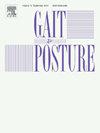Evaluating the use of electromyography in UK and European gait laboratories for the assessment of cerebral palsy and other neurological and musculoskeletal conditions
IF 2.2
3区 医学
Q3 NEUROSCIENCES
引用次数: 0
Abstract
Background
Electromyography (EMG) can estimate the magnitude and timing of muscle activation during walking in those with gait disorders. Despite the potential of EMG use in assessment and clinical decision-making, there are reports of declining use of EMG within gait laboratories. Technical and educational barriers to EMG usage in clinics in Italy were recently suggested.
Research question
What is the current EMG practice and associated knowledge and barriers to EMG usage in UK and European clinical gait labs?
Methods
Semi-structured interviews were conducted online with 16 participants recruited from 13 gait laboratories across the UK and wider Europe, 11 participants used EMG routinely in clinical service and five did not. Participants held various professions including physiotherapists, clinical scientists, a lab manager, biomechanist, orthopaedic surgeon and a biomedical engineer. Interviews were transcribed and analysed using reflexive thematic analysis.
Results
EMG training was often completed in-house informally by colleagues. Findings show EMG was currently used for assessing muscle activation timings, spasticity, co-contraction in patients and often used as a confirmatory tool. Challenges of using EMG included: justifying the effort, distinguishing true deviations from the norm, capacity to collect good quality data and feasibility with a given patient.
Significance
The challenge of interpreting EMG signals, patient readiness and time requirements were consistent between the gait labs reflecting previous reports from Italy. There were also large variations in types of EMG training and education in agreement with previous findings. In contrast to previous findings, cost was not considered important within this study.
Conclusion
For EMG to be more widely and routinely used, the perceived effort of staff and patients would need to be justified by a clear link to the treatment planning and decision-making through further published evidence and training.
评估在英国和欧洲的步态实验室使用肌电图来评估脑瘫和其他神经和肌肉骨骼疾病。
背景:肌电图(EMG)可以估计步态障碍患者行走时肌肉激活的幅度和时间。尽管肌电图在评估和临床决策中的应用具有潜力,但有报道称,在步态实验室中肌电图的使用正在减少。最近提出了在意大利诊所使用肌电图的技术和教育障碍。研究问题:英国和欧洲临床步态实验室目前的肌电图实践和相关知识以及肌电图使用的障碍是什么?方法:在线进行半结构化访谈,从英国和更广泛的欧洲的13个步态实验室招募了16名参与者,11名参与者在临床服务中常规使用肌电图,5名没有。参加者从事不同的职业,包括物理治疗师、临床科学家、实验室经理、生物力学家、骨科医生和生物医学工程师。访谈记录和分析使用反身性主题分析。结果:肌电训练通常由同事非正式地在公司内部完成。研究结果显示,肌电图目前用于评估患者的肌肉激活时间、痉挛、共收缩,并经常用作确认工具。使用肌电图的挑战包括:证明工作的合理性,区分与常规的真正偏差,收集高质量数据的能力以及对特定患者的可行性。意义:解释肌电图信号、患者准备状态和时间要求的挑战在步态实验室之间是一致的,反映了意大利先前的报告。与之前的研究结果一致,肌电训练和教育的类型也存在很大差异。与之前的研究结果相反,本研究认为成本并不重要。结论:为了更广泛和常规地使用肌电图,工作人员和患者的感知努力需要通过进一步公布的证据和培训来证明与治疗计划和决策的明确联系。
本文章由计算机程序翻译,如有差异,请以英文原文为准。
求助全文
约1分钟内获得全文
求助全文
来源期刊

Gait & posture
医学-神经科学
CiteScore
4.70
自引率
12.50%
发文量
616
审稿时长
6 months
期刊介绍:
Gait & Posture is a vehicle for the publication of up-to-date basic and clinical research on all aspects of locomotion and balance.
The topics covered include: Techniques for the measurement of gait and posture, and the standardization of results presentation; Studies of normal and pathological gait; Treatment of gait and postural abnormalities; Biomechanical and theoretical approaches to gait and posture; Mathematical models of joint and muscle mechanics; Neurological and musculoskeletal function in gait and posture; The evolution of upright posture and bipedal locomotion; Adaptations of carrying loads, walking on uneven surfaces, climbing stairs etc; spinal biomechanics only if they are directly related to gait and/or posture and are of general interest to our readers; The effect of aging and development on gait and posture; Psychological and cultural aspects of gait; Patient education.
 求助内容:
求助内容: 应助结果提醒方式:
应助结果提醒方式:


